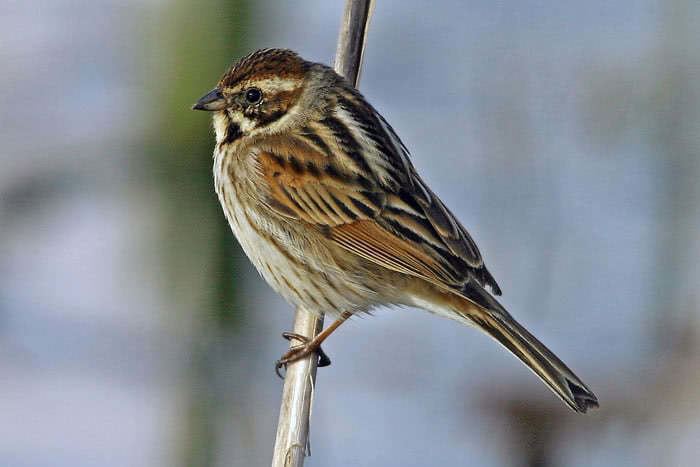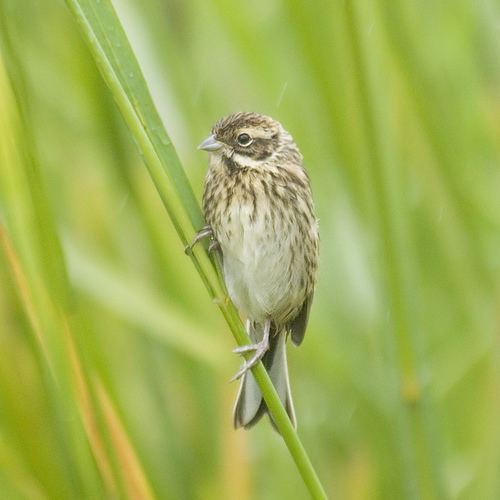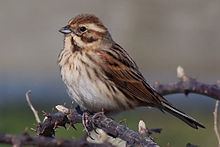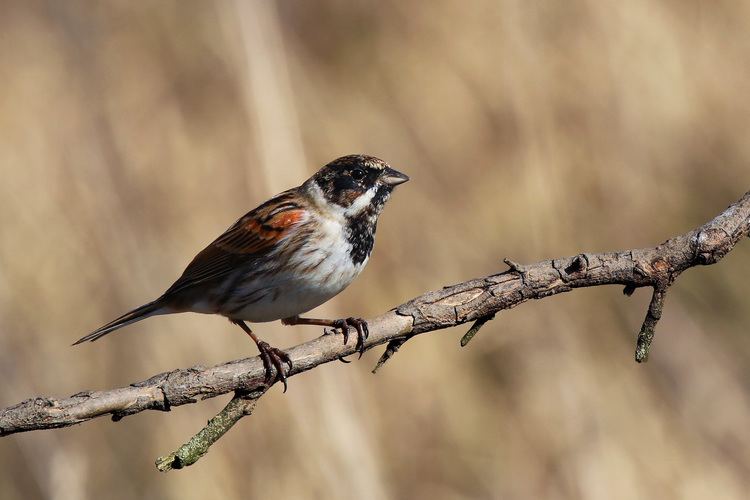Order Passeriformes Genus Emberiza Higher classification Emberiza | Phylum Chordata Family Emberizidae Scientific name Emberiza schoeniclus Rank Species | |
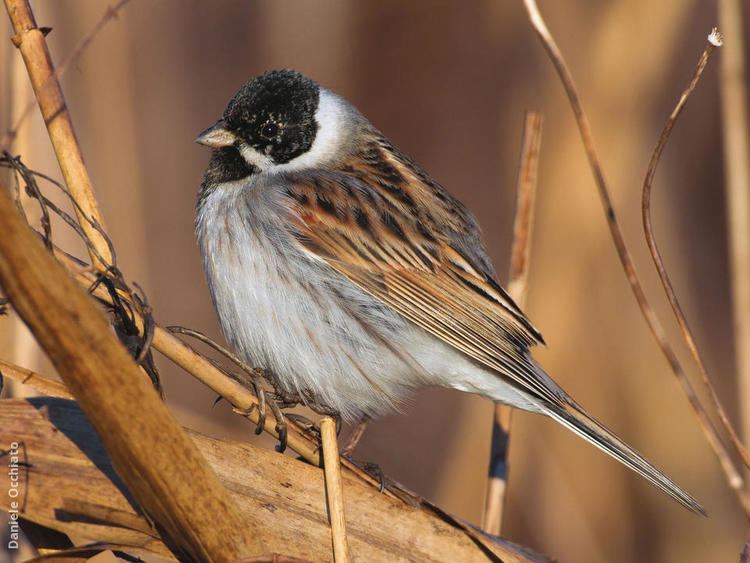 | ||
Similar Bird, Emberiza, Yellowhammer, Meadow pipit, Eurasian reed warbler | ||
The common reed bunting (Emberiza schoeniclus) is a passerine bird in the bunting family Emberizidae, a group now separated by most modern authors from the finches, Fringillidae. The genus name Emberiza is from Old German Embritz, a bunting. The specific schoeniclus is from Ancient Greek skhoiniklos, a now unknown waterside bird.
Contents
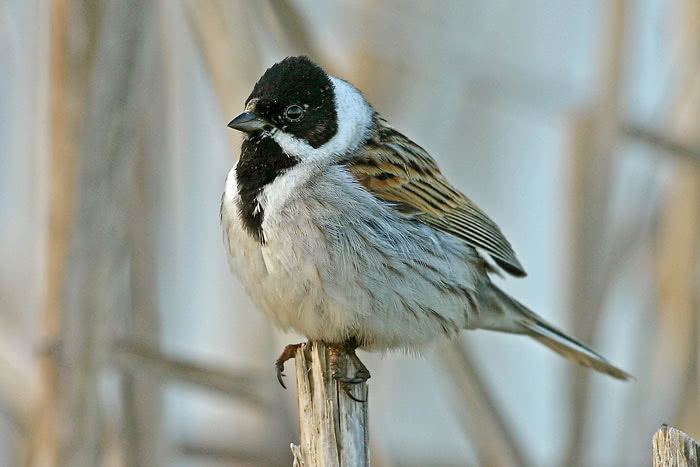
It breeds across Europe and much of temperate and northern Asia. Most birds migrate south in winter, but those in the milder south and west of the range are resident. It is common in reedbeds and also breeds in drier open areas such as moorland and cultivation. For example, it is a component of the purple moor grass and rush pastures, a type of Biodiversity Action Plan habitat in the UK. It occurs on poorly drained neutral and acidic soils of the lowlands and upland fringe. It is found in the South West of England, especially in Devon.
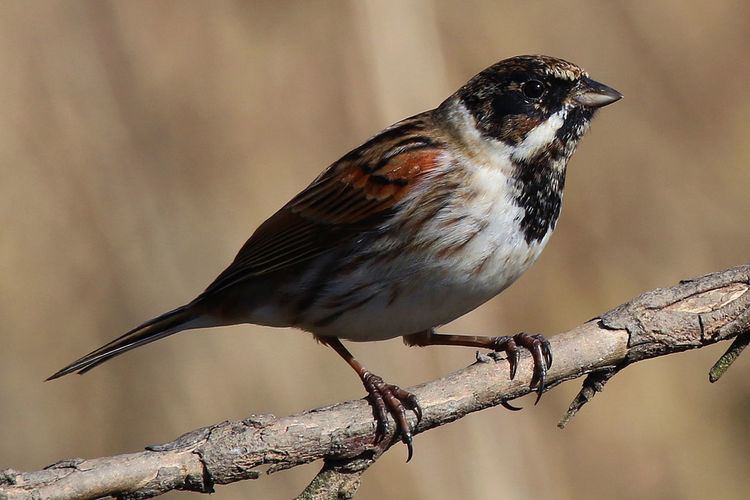
The familiar, monotonous, song of the cock is a repetitive zrip.
Description
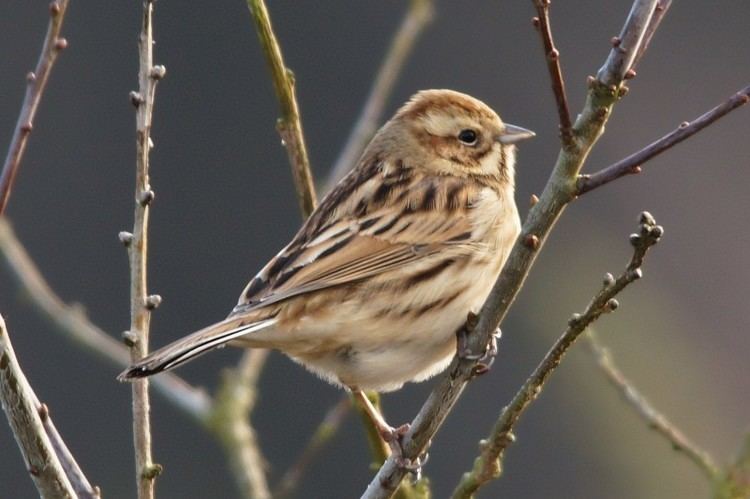
The common reed bunting is a medium-sized bird, 13.5–15.5 cm long, with a small but sturdy seed-eater's bill. The male has a black head and throat, white neck collar and underparts, and a heavily streaked brown back. The female is much duller, with a streaked brown head, and is more streaked below.
Food and feeding
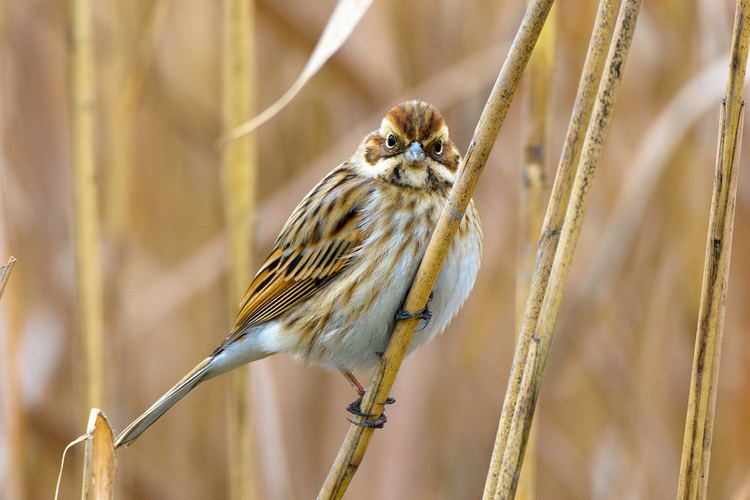
Its natural food consists of insects when feeding young, and otherwise seeds. The nest is in a bush or reed tussock. 4–7 eggs are laid, which show the hair-like markings characteristic of those of buntings.
